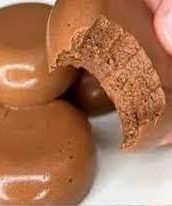Turkish flatbread, or pide, is a cherished staple in Turkish and Middle Eastern cuisine. Its irresistible aroma, soft texture, and adaptability make it a go-to bread for everything from hearty meals to quick snacks. If you’ve ever indulged in the culinary delights of Turkey or a Turkish bakery, you’ll know how satisfying this bread can be. Let’s explore the secrets behind this timeless bread and how you can make it easily at home.
A Cultural Gem: The Story of Turkish Flatbread
Bread is a vital part of Turkish culture, symbolizing nourishment, community, and tradition. Turkish flatbread is not only served alongside rich stews and kebabs but also used to scoop up dips and mezes like hummus, baba ganoush, and muhammara. Its subtle flavors make it an ideal companion for both savory and slightly sweet pairings.
Ingredients Breakdown: Why Each Element Matters
Creating an authentic pide begins with the right ingredients. Here’s what you’ll need and why each one is essential:
Dough Essentials
- Lukewarm Filtered Water (1 cup + 2 Tbsp): Warm water activates the yeast, ensuring a good rise and fluffy texture.
- Active Dry Yeast (2 ¼ tsp): This key ingredient gives the flatbread its airy, soft interior.
- Maple Syrup (1 tsp): Feeds the yeast and adds a touch of natural sweetness.
- All-Purpose Einkorn Flour (3½ cups): Einkorn flour has a mild nutty flavor and is rich in nutrients. Regular all-purpose flour can be substituted if needed.
- Sea Salt (1 tsp): Enhances flavor and balances the sweetness of the maple syrup.
Vegan Egg Wash
- Ground Flaxseed (1 Tbsp): Acts as a plant-based binding agent to create a glossy, golden crust.
- Filtered Water (2 ½ Tbsp): Hydrates the flaxseed for a smooth consistency.
- Extra Virgin Olive Oil (1 Tbsp): Adds richness and a subtle flavor.
- Maple Syrup (¼ tsp): Balances the savory elements with a touch of sweetness.
- Sea Salt (¼ tsp): Complements the other ingredients, enhancing overall flavor.
Toppings
- White Sesame Seeds (1 Tbsp): Add a nutty crunch and visual appeal.
- Black Sesame Seeds (¼ tsp): Provide contrast and a deeper nutty flavor.
The Science of Baking Perfect Pide
Achieving the perfect flatbread comes down to three critical phases: preparation, proofing, and baking. Let’s dive into each.
1. Activating the Yeast:
Yeast is the powerhouse of your bread. Mixing it with lukewarm water and maple syrup wakes it up, leading to the frothy mixture that ensures a light and airy dough. Always ensure your water is warm (about 110°F or 43°C) but not hot, as high temperatures can kill the yeast.
2. Kneading the Dough:
Kneading activates gluten, the protein network that gives bread its structure. Use a stand mixer with a dough hook for 5 minutes or knead by hand for 10 minutes. You’ll know the dough is ready when it’s smooth and elastic, pulling away from the sides of the bowl without sticking excessively.
3. Proofing the Dough:
Proofing allows the yeast to ferment, producing carbon dioxide that makes the dough rise. Cover the dough with a damp cloth and let it rest in a warm place until it doubles in size. If your kitchen is cool, use the oven trick: preheat the oven to 110°F (43°C), turn it off, and place the covered dough inside.
4. Shaping and Resting:
Once the dough has risen, punch it down to release excess air. Shape it into a round, leaving slightly thicker edges for a traditional pide appearance. Resting the shaped dough for 15 minutes before baking helps it relax, ensuring a tender texture.
5. Baking to Perfection:
Preheat your oven to 400°F (200°C). The high heat creates a golden crust with beautifully caramelized spots. Bake for 10-15 minutes, keeping a close eye to avoid overbrowning.
Common Mistakes and How to Avoid Them
- Inactive Yeast: If your yeast-water mixture doesn’t foam, the yeast may be expired. Always check the date before starting.
- Sticky Dough: Add a little more flour if the dough is too sticky, but avoid overloading it to maintain softness.
- Overproofing: Allowing the dough to rise too long can weaken its structure, resulting in flat bread. Stick to the recommended rise times.
Serving Ideas and Variations
Pairings:
Turkish flatbread is versatile and pairs well with a variety of dishes:
- Dips: Serve with creamy hummus, labneh, or spicy muhammara.
- Mezes: Pair with stuffed grape leaves, marinated olives, or roasted vegetables.
- Stews: Ideal for scooping up hearty stews like lamb tagine or lentil soup.
Flavor Variations:
- Add a sprinkle of za’atar or sumac for a Middle Eastern twist.
- Incorporate minced garlic or dried herbs into the dough for added flavor.
- Swap white sesame seeds for nigella seeds for a slightly peppery taste.
Pro Tips for Reheating and Storing
- Freshness First: Turkish flatbread is best enjoyed fresh from the oven, but leftovers can be just as delightful.
- Reheating: Warm the bread in a preheated oven at 350°F (175°C) for 5-7 minutes to restore its texture. A toaster oven works well too.
- Freezing: Wrap tightly in plastic wrap or aluminum foil and freeze for up to 4 weeks. Thaw at room temperature and reheat before serving.






